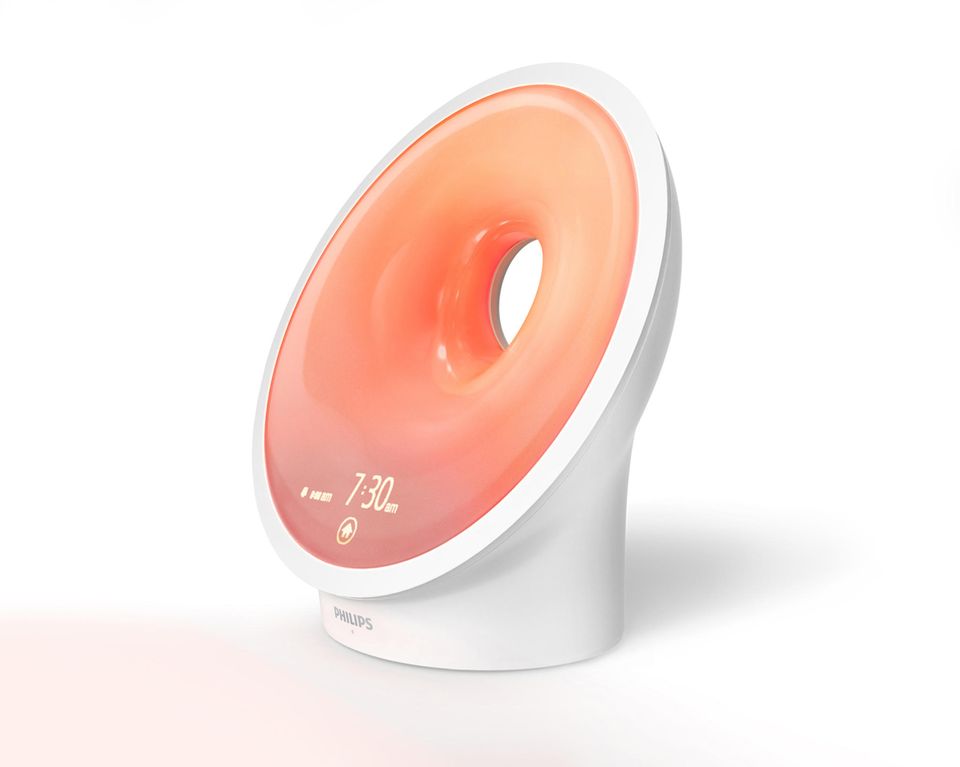Millions of Germans have trouble getting out of bed in the morning. The Philips connected Sleep & Wake-up Light should help – we tested the light alarm clock.
Sleep and me: this is a love-hate relationship, as it is in the book. I am generally more of a night owl and regularly have major problems falling asleep – lying awake for at least an hour is actually normal for me – and likewise great difficulty getting out of bed in the morning. This problem is exacerbated by the fact that I have chronically low blood pressure, usually stand next to me in the early morning and generally just need a while before I get going.
Is it finally easier for me to get out of bed?
That's why I'm always happy when I'm allowed to try out new gadgets that are supposed to improve sleep or wake up. After I was allowed to test the Somnox sleep robot, but wasn't overly enthusiastic, I will now try the Philips connected Sleep & Wake-up Light. This is a light alarm clock that is supposed to make it easier for us to get out of bed in the morning with a natural sunrise simulation. The associated app should also be used to control the sleeping environment and improve it accordingly.

A light alarm clock as a chic eye-catcher
When I unpack the first thing I notice is the chic and modern design of the light alarm clock. The round, small device is a real eye-catcher on the bedside table – I was even approached by friends when I visited it. The initial setup works via the app and is quick and easy. But: For some functions of the app you obviously need a Philips account, the necessity of which I did not understand. That could probably put off one or the other interested party.
What can the Philips connected Sleep & Wake-up Light do?
The light alarm clock offers many different functions: You can be woken up in the morning by the natural light of a sunrise and fall asleep in the evening with the light of a sunset. In addition, you can set whether you want to hear different relaxation sounds such as the sound of waves or the chirping of birds or whether the radio should be on. Once the alarm clock has been set up, the basic functions can also be performed on the device itself using the touchscreen. However, the symbols on the alarm clock are not always very intuitive: Sometimes I clicked through the menu a little haphazardly without finding the setting that I wanted to correct. In an emergency, however, a look at the enclosed (rather thick) manual can also help.
Apart from the control of basic settings such as alarm time, light simulation and alarm tones the app also directly controls the sleeping environment: How high is the humidity in the room, is the temperature perhaps too high? For example, the app complained to me that my bedroom was around 22 degrees. The optimal sleeping temperature for most people is between 16 and 18 degrees, which is why the comment is basically correct. However, I am a complete frostbite – when the room is below 20 degrees I shiver under my duvet, sleep is then impossible. However, if you have not yet dealt with your sleeping environment, you could have one or two aha experiences with the app.
Internet? Doesn't exist here!
I made the basic settings of the light alarm clock in the living room, then I put the device on the bedside table in the bedroom. This was where the biggest annoyance occurred: the internet connection in the bedroom is only slightly worse than in the living room (video streams on the cell phone, for example, are not a problem at all), but the app immediately lost the connection to the light alarm clock and could no longer find it. I tried to restore it several times – unsuccessful. From that moment on, I only used the app rudimentarily, because the light alarm clock got to in the bedroom, of course, but without a permanent connection to the device, the app is simply useless.
And what did it bring?
I woke up to the simulated sunrise for three weeks. It is important to know that the light comes on at a low intensity before the officially set alarm time and that it gradually becomes brighter. This had the advantage that I usually woke up from the light alone and was slowly getting used to the idea of having to get up soon before the alarm sounds. And that actually made it a little easier for me to get out of bed in the morning. In general, I felt a little more awake and, accordingly, a little bit in a better mood.
Philips connected Sleep & Wake-up Light: conclusion
Basically, I find it pleasant to let the natural light wake me up and I will probably continue to do so in the future. I will do without the additional use of the app, but it can be interesting for all those who are still looking for possible reasons for their poor sleep. Everyone has to decide for themselves whether this function would cost a lot of money – the current version of the light alarm clock is available for around 170 euros and is therefore not exactly a bargain. If you just want to try out whether it is actually easier to get out of bed with the help of a light alarm clock, you might first try a cheaper model: pure light alarm clocks without further technical support are available from around 20 euros.
Note: The device was made available to us free of charge for the test.
